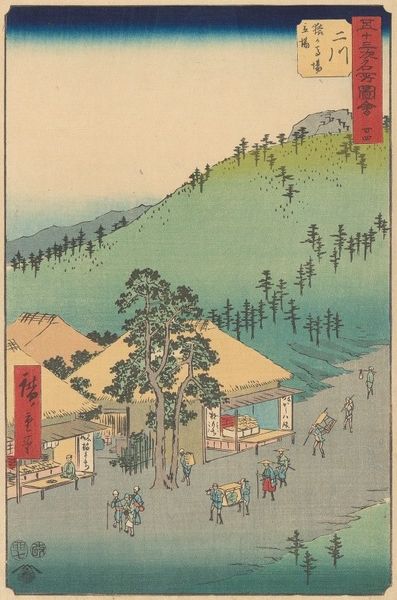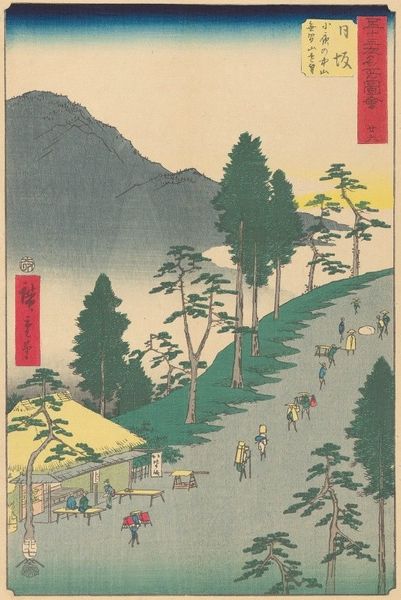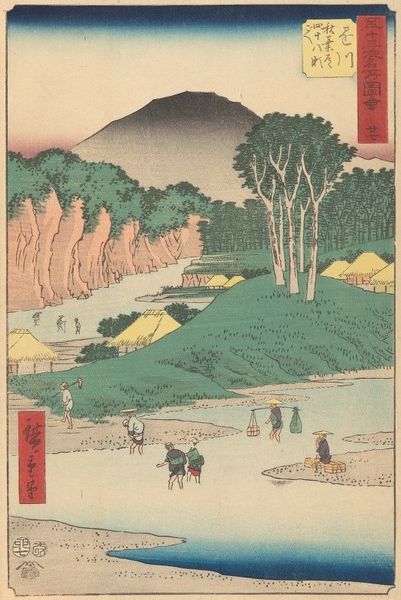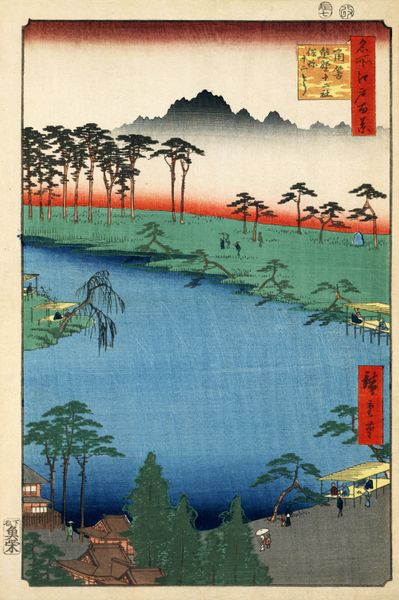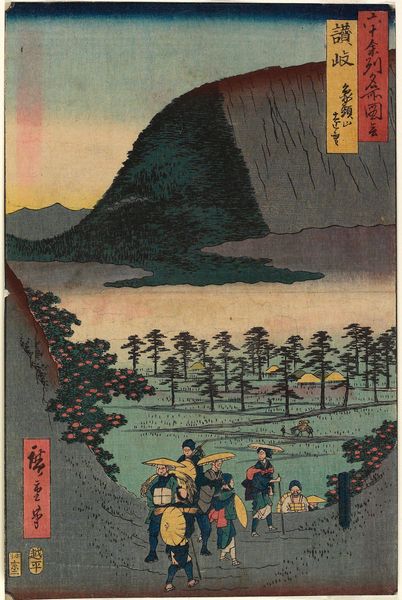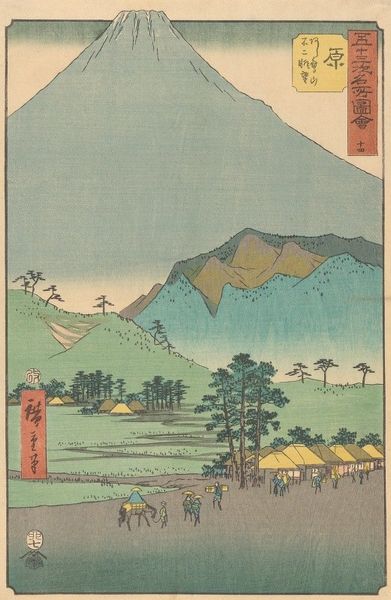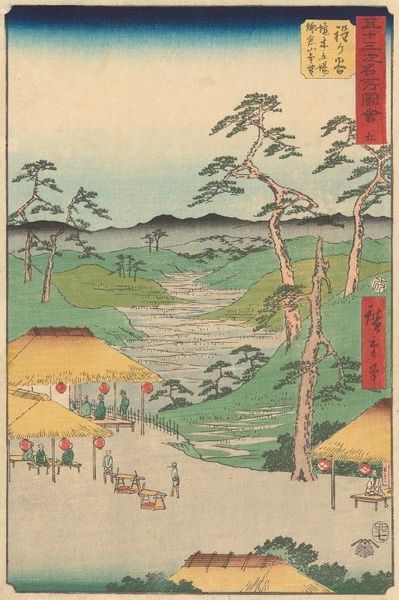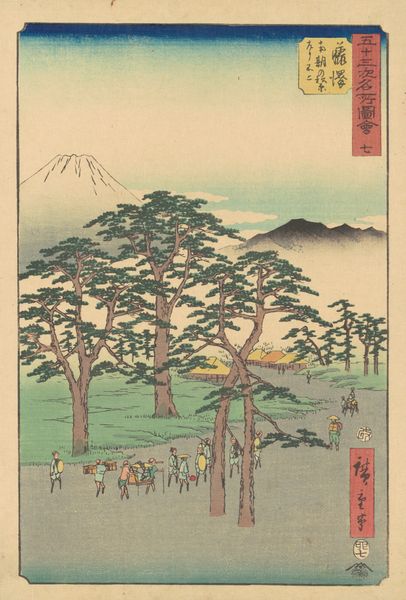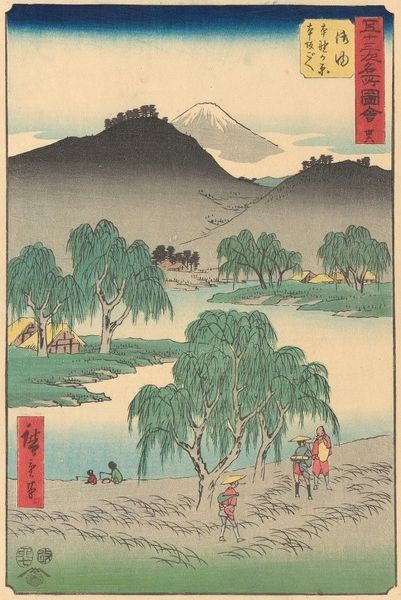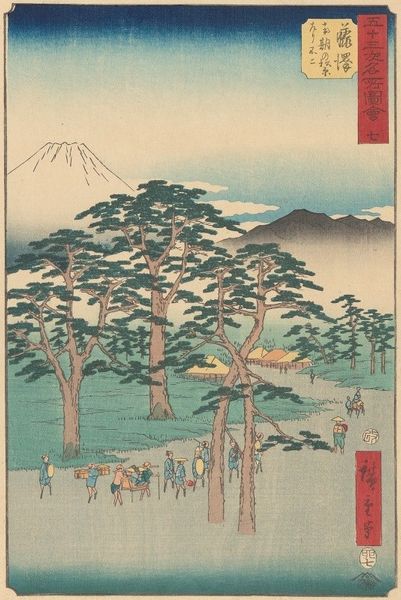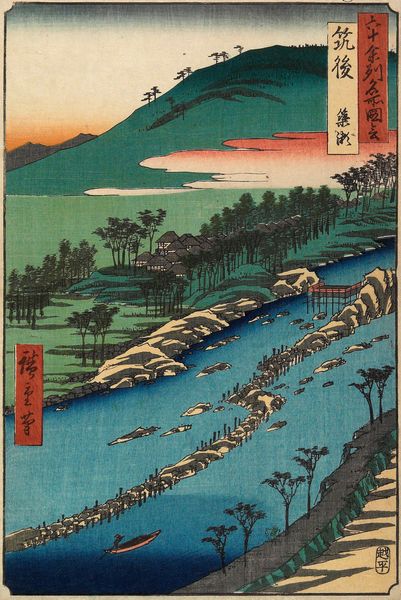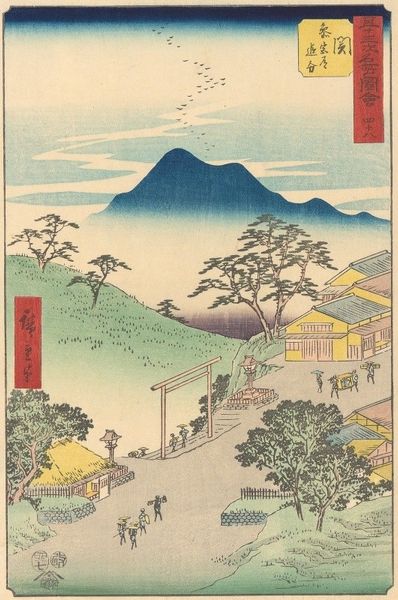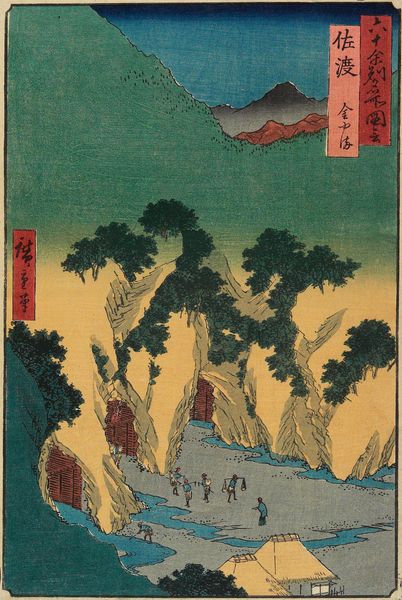
print, ink, woodblock-print, woodcut
#
water colours
# print
#
asian-art
#
landscape
#
ukiyo-e
#
ink
#
coloured pencil
#
woodblock-print
#
woodcut
Dimensions: 13 9/16 x 8 7/8 in. (34.4 x 22.6 cm) (image)14 1/4 x 9 5/8 in. (36.2 x 24.4 cm) (plate)
Copyright: Public Domain
Curator: My first thought looking at this print is how vividly green it is, almost overwhelmingly so. It certainly sets a vibrant, energetic mood! Editor: That’s a wonderful observation. What you're seeing is an artwork entitled "34," possibly created between 1855 and 1857 by Utagawa Hiroshige. It’s a woodblock print, a medium that lends itself particularly well to these bright colors. Curator: Woodblock prints are incredible! And you are so right, that method and colour create such an energetic impact to a mundane day on what appears to be a trade road for goods? What a fantastic cross section of folks using that thoroughfare! You see merchants, what appears to be lower-income shoppers. Were there even class markers on that day represented in how folks would present themselves? Editor: It's intriguing to think about class and status as performance here. Certainly, in Edo-period Japan, clothing and accoutrements were deeply coded. What interests me more, however, is the visual layering Hiroshige employs: the foregrounded travelers, the shops creating a midground, and then the mountain receding into the background, drawing our eye upwards, the arrangement and structure of forms as fundamental bearers of meaning in the composition. Curator: Yes, and note how the shops frame the mountain behind, creating an echo of forms—the angled roofs mimicking the mountain's slope. What statements may have been trying to have been spoken within his creation? I’m fascinated by the human element juxtaposed with the idealized landscape. Was this a political comment of humanity over nature perhaps, since landscape traditionally represented nobility? Editor: Political comment maybe, but equally about the inherent spirituality within it, a connection of the land, human and spiritual all represented as one? By visually balancing the human and natural elements so deliberately, I'm thinking more of a dialogue here. I see it as the very act of representation. That moment of cultural and personal recognition—is profoundly meaningful. What does it spark in us today? Curator: What a stunning closing point. A single artwork encapsulating a historical period, techniques and theories around a human's ability to exist as a part of landscape. Editor: It's precisely that interplay – form, content, history – that makes encountering this piece such a multi-layered experience.
Comments
No comments
Be the first to comment and join the conversation on the ultimate creative platform.
